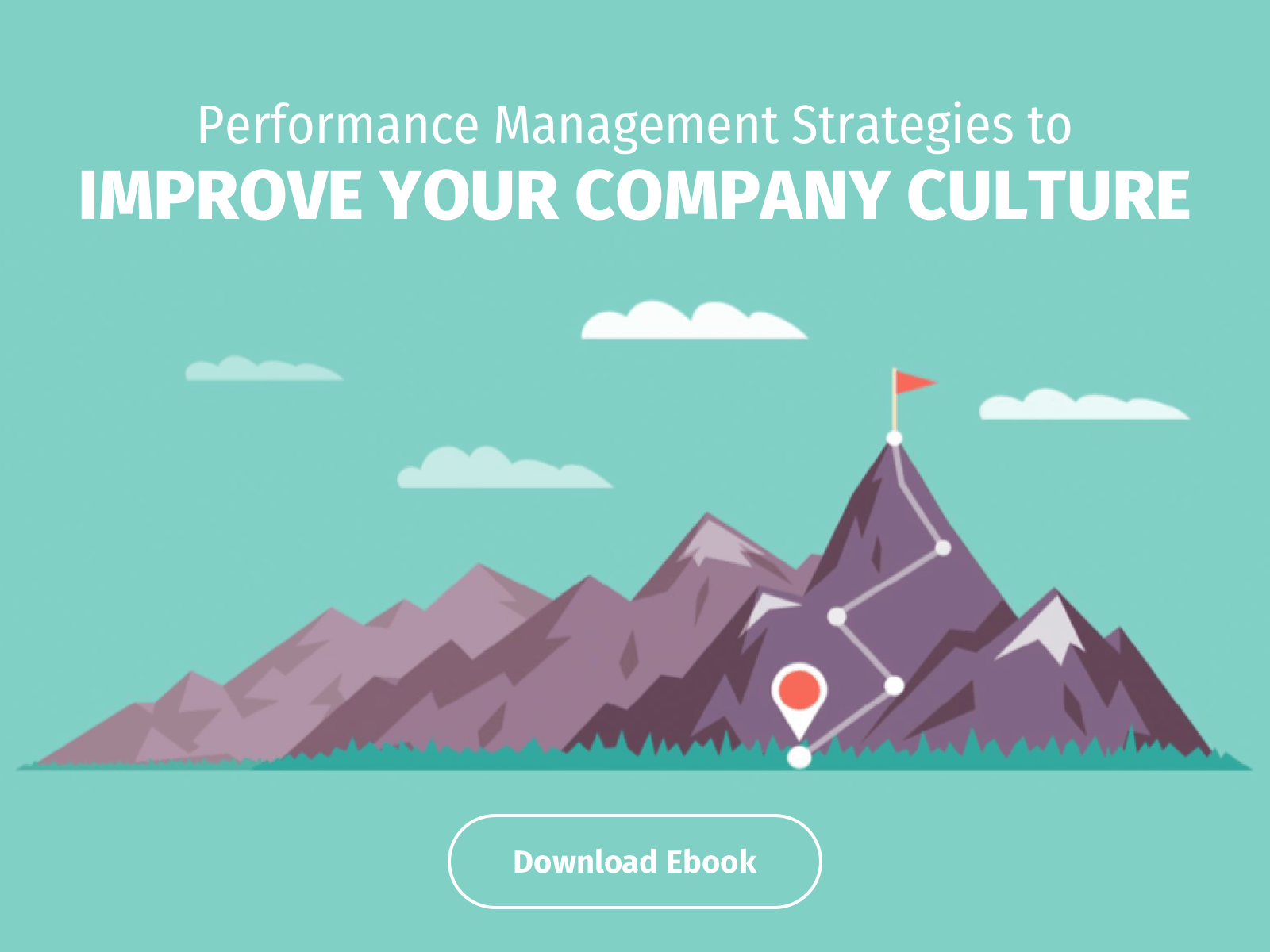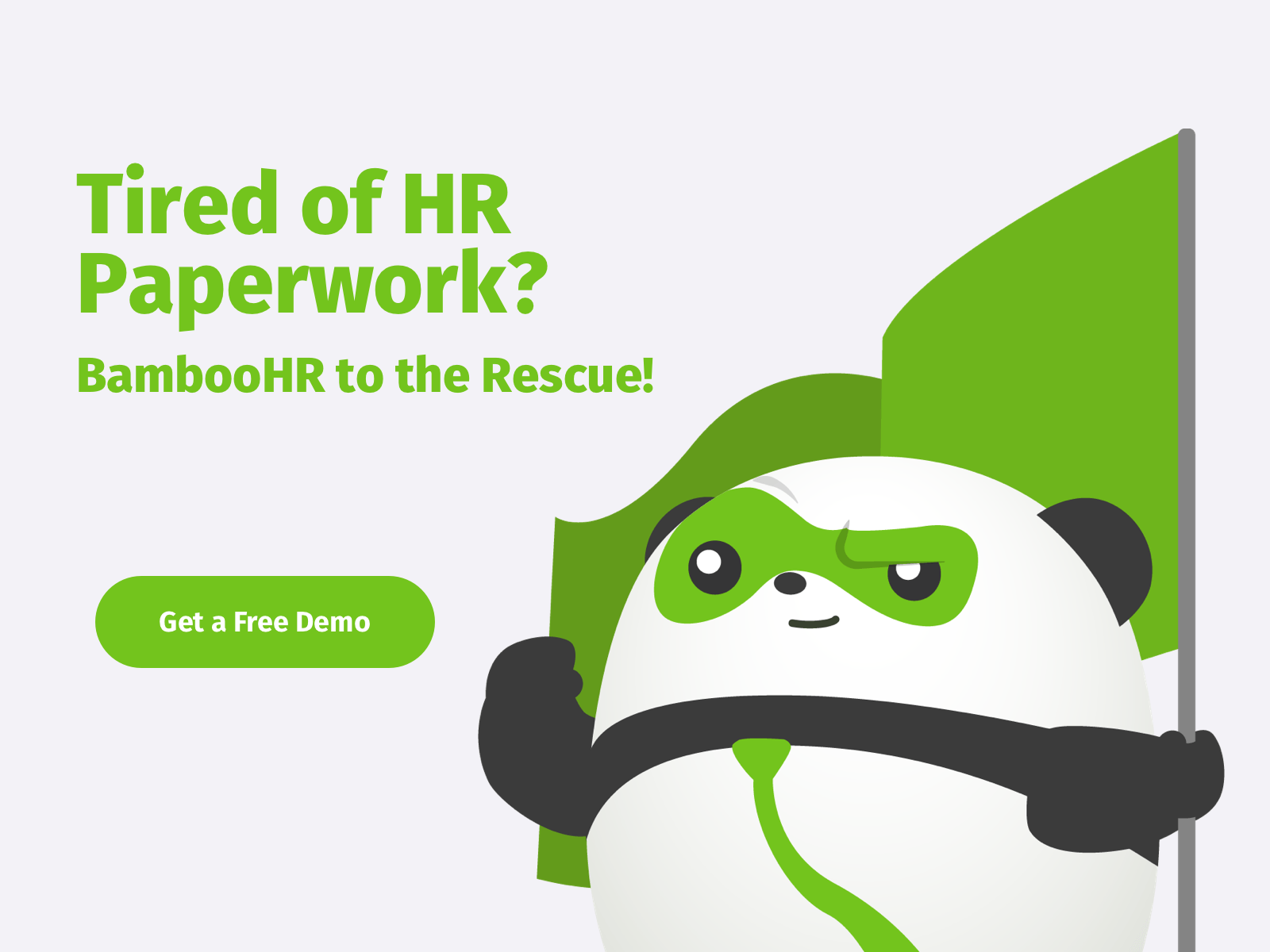Why Is Human Resources Important?
There comes a point in every startup or fledgling business where you start to consider adding human resources to your structure.
Many founders and business owners are experts in their industry; however, management skills don’t always come as second nature. As companies grow, it can become difficult to juggle things like employee benefits, payroll concerns, and interoffice conflicts. Eventually, the business reaches critical mass, and management has to decide whether or not to put HR on the payroll.
The problem is, for many productivity-focused businesses, the value of HR isn’t always readily apparent. Often, businesses can see they have a need, but don’t know if hiring a human resource professional (or outsourcing to an HR firm) will bring a positive ROI. Many choose not to field an HR team, then find that their concerns only grow more severe as the company increases in size.
How important is HR for your business? Can human resources help your business be more profitable? If so, how do you measure it?
If you’re not sure about the value of HR for your organization, here is a breakdown of the role of HR and why strategic human resource management is so important for modern businesses.
Table of Contents
What Does HR Actually Do?
Many successful HR departments achieve their success by treating employees of the company as their customers.
Reframing the HR/employee relationship this way helps maintain perspective on HR’s ultimate goal: to help employees do their best at their jobs. Just as it’s the sales team’s job to turn prospects into loyal, recurring customers, it’s HR’s job to turn prospective and current employees into loyal, dedicated members of the company.
While there are a large number of functions a given HR department might perform for a company, most of the responsibilities laid at their feet (especially the ones they’re hired specifically to handle) can be boiled down to six basic functions:
- Tracking applicants & hiring strategically—it’s HR’s job to supply the company with qualified, reliable talent
- Managing benefits & time off—it also falls to HR to manage schedules, time off, and benefits like health insurance
- Training managers & employees—part of what makes HR so valuable is that they can help elevate the workforce, training managers to be better leaders and training employees to have a deeper, wider skill set
- Streamlining the onboarding process—not every company environment is one you can jump into with both feet and stay afloat; some businesses have a steep cultural learning curve, and it’s HR’s responsibility to make culture integration easier
- Resolving interoffice conflicts—HR professionals receive specialized training to be able to mediate conflicts between employees and between employees and management
- Handling legal concerns—lastly, HR professionals are responsible for ensuring labor and employment laws are being followed, and for handling discrimination and harassment complaints
All of these duties have a tendency to expand rapidly as companies add employees, and it doesn’t take long before handling them becomes a job in itself.
That said, there are still some owners and managers that try to go it alone, attempting to do both their job (which may be highly technical and/or time-consuming) and the work normally assigned to human resources. The problem with this strategy is it often leaves HR functions as secondary to tasks that more directly impact the bottom line.
Why Human Resource Functions are Important
So the question is, how important are HR functions? Can your business get by without hiring someone specifically to fill them? Let’s take a look at the importance of each function separately.
Tracking Applicants & Hiring Strategically
The recruitment process is a difficult one. It can take months (or for some positions, years) to go from initial job posting to hiring to peak productivity.
Worse yet, there’s the chance you’ll hire a poor fit for the position or for the company, causing friction down the road that could even result in the loss of a new employee. Then you’re hiring for the position all over again, and when turnover costs can be as high as twice the annual salary of the position, high turnover rates can bleed your company dry.
Many managers lack sufficient time in their schedule to give hiring the attention it deserves, often resulting in less-than-stellar hiring decisions, lackluster onboarding processes, and high levels of frustration for managers, new hires, and their peers. HR professionals help handle this process, making it easier to find quality talent, hire the right candidate, and get them up to speed quickly.
Managing Benefits & Time Off
Compensation isn’t the only yardstick by which current and prospective employees measure a job. Benefits and time off are also serious considerations, and they’re pivotal to ensuring engagement in your workforce. Without a professional who understands how to prioritize benefits, both to and on behalf of the organization, these important details rarely get the focus and strategizing they need.
Employing HR professionals means having someone to negotiate with health insurance companies. Someone who can notify you if any of your employees are overusing (or underusing) their vacation/sick days over time. Someone to tweak benefits and come up with incentive programs to keep spirits high, and someone who can promote knowledge and usage of the benefits your organization provides. In short, it means improved engagement from your employees.
Training Managers & Employees
It’s often said that “people don’t leave companies, they leave managers.” While that’s true in some cases, the answer to the entire problem isn’t that simple. More than half the problem of employee engagement is the availability (or lack thereof) of progression and development in the company.
Few people feel passionate enough about what they do that they’re willing to continue doing grunt work for the next 40 years. Most want upward mobility: additional challenges, additional responsibility, and additions to their paycheck. When they feel like they will never be recognized or appreciated for their efforts or their talent, engagement drops sharply, and employees start thinking about leaving.
Even when there are opportunities for progression, lack of faith in the company’s leadership or lackluster management can tank engagement, leaving valuable talent unwilling to stick it out to see the fruits of their labors.
Having HR professionals who can help employees and managers develop their skills turns the tide in this struggle. Instituting employee training and development helps employees work towards qualifying for more advanced positions, and HR training and development for managers means they’ll be more capable of coaxing the best work out of their teams.
Streamlining the Onboarding Process
Too often, onboarding is left to chance. Only 32 percent of organizations have formal onboarding programs, and more than half of employees say they could do their job better if they had better training. Onboarding is the keystone here. Employees who are “highly satisfied” with the company’s onboarding experience are twice as likely to feel comfortable in the first year with the company.
An HR team can help craft a more engaging, more effective onboarding process. What’s more, they can create onboarding that’s specific to the job in question, so that your employees don’t join the 36 percent of employees who don’t receive relevant training.
Resolving Interoffice Conflicts
Among employees, 67 percent avoid coworkers because of an office conflict, and 25 percent avoid work altogether (e.g., calling in sick) to avoid conflict.
And since 43 percent of employees have a poor opinion of how their bosses handle conflict, many are reluctant to approach their bosses about their issues with coworkers. Workplace squabbles can be very difficult to navigate, and neither employees nor managers can be reasonably expected to know how to reach a peaceful resolution without proper training. And, let’s face it, training every employee extensively in conflict resolution is not always a viable solution.
That’s why it’s helpful to have HR professionals that employees can reach out to. HR teams who have trained in conflict resolution are prepared to handle the difficulties of interpersonal conflict, and training a single department is far easier (and less costly) than training an entire organization. The less conflict you have in the office, the happier your employees will be and the more engaged they will be in their work.
Handling Legal Concerns
In 2016 alone, there were over 91,000 discrimination and harassment charges filed with the EEOC.
That’s only the charges that were filed; it’s safe to assume there were many more incidents that went unmentioned due to factors like fear of retaliation, lack of evidence, and misunderstanding the law. It’s an issue that raises its ugly head quite frequently, and companies need to be prepared to deal with the legal ramifications.
Without a dedicated HR professional, it can be difficult to keep track of all the applicable laws and regulations and make sure that the company is on the right track. What’s more, with no HR professional to turn to when there’s a problem, issues may go unresolved (and unnoticed by the company) until it escalates to litigation—which cost U.S. companies $482 million in settlements alone in 2016.
How Do I Calculate the ROI of HR?
Maybe after reading those human resource examples, you’re ready to put HR to the test to see if an investment in human resources really pays off. But how do you measure something as abstract as the impact of human resources on your company?
There are a number of key performance indicators you can measure to get an idea of what kind of return you’re getting from your HR efforts. Let’s start with two easy KPIs: turnover rates and absenteeism.
Turnover Rates
If your HR efforts are working, your turnover rates should be decreasing. Or, at the very least, they shouldn’t be getting worse. Measuring your turnover rates involves using a very simple equation to see what percentage of your workforce or team has turned over in a given period of time. For demonstration’s sake, let’s say your measurement period is the third quarter. You employ 30 people, and five of them left the company and were replaced during the quarter. Your equation should look like this:
30-5 = 25
25 ÷ 30 = .83
.83 x 100 = 83%
This gives you your retention rate or the percentage of employees you’re hanging on to. If you want the turnover rate specifically, the extra step is easy:
100%-83% = 17%
Most industries aim for a ratio that sits around 85%/15% or better. Compare your retention and turnover rates over time to see if your company is getting better or getting worse.
Absenteeism
Absenteeism rates are found using another easy calculation. Keep in mind, absenteeism is usually referring to unplanned absences (in other words, planned paid vacation days don’t count).
Absence Rate = Total Absentee Workdays ÷ (Number of Workdays in the Year x Average Company Employee Population)
Additional metrics you can use to understand how effective your HR efforts are over time include:
- Talent defection rates
- Safety incidents
- Company-wide head-count
- Cost per hire
- Total employees trained
- Total hours spent training
- Time to fill positions
- Competitiveness of compensation and benefits
As you measure your progress, be prepared to adjust course if some of your (or your HR team’s) practices and policies aren’t having the desired effect. It may take a little time to find an effective framework for your organization, but when you do, you’ll reap the benefits that HR has to offer.
The Cost of HR’s Absence
You might still be wondering if you really need human resource management in your company. Maybe you think your organization is too small to need it, or that you can handle the functions by yourself. Maybe you think you can’t afford to hire a professional or outsource HR to an experienced team. Whatever your reason, we want to caution you against being dismissive of implementing an HR strategy, as it can have severe consequences including the following:
-
Poor hiring practices
Without human resource management, you’re likely using some form of a fire-and-forget job listing, whether that’s putting an ad in the paper, copy-pasting it into a few online job boards, or even simply hanging a “Help Wanted” sign in the window. If you’re just throwing the listing out there, odds are you’re not giving the actual interview and hiring process the attention it needs, which results in failing to attract the right talent and failing to hire the right employees. And no company can afford bad hires.
-
Poor benefits management
These days, you can’t throw a couple days of PTO at your employees and call it good. Nor can you simply trust people to sign up for insurance or accurately report time off. Without an HR team, you run the dual risks of being less than competitive in the area of benefits and being out of compliance with the benefits you actually provide. This is more than simply a legal or budgetary problem, especially because most employees would take additional benefits over a pay raise, both among Gen X’ers (84 percent) and millennials (89 percent).
-
Poor commitment to your organization
Just as the generations replacing the Baby Boomers are looking for important benefits like adaptive health care coverage and flexible scheduling, they’re also looking for opportunities for advancement. In fact, they’re taking significant pay cuts in order to take jobs that match their long-term goals. Without an HR professional around to ensure that they’re getting the training and mentoring they need to prepare for advancement, they’re as likely as not to abandon ship.
-
Poor perception of your organization
We mentioned above that a lot of employees are unhappy with their company’s onboarding process, and a bad first impression can lead to any number of issues down the road. More often than not, a lack of onboarding process goes unremedied unless there’s someone specifically assigned to the task, and without HR professionals, there’s rarely anyone at the company who has time to devote to onboarding.
-
Toxic work environment
Toxic work environments are real problems. They can seriously damage your health. Whether it’s friction between co-workers, a boss who won’t listen, or a company culture that’s grown downright malignant, they all take a toll on your workforce. The thing is, working men and women aren’t taking it lying down. Of the workforce as a whole, 74 percent are willing to start looking for new employment, and 32 percent are already doing so. Without an HR strategy in place to help improve company culture and moderate conflicts in the office, employee disengagement and turnover rates will continue to be high. Who has the experience and the time to develop a successful HR strategy? HR professionals.
Tips for Implementing HR Management
If we’ve convinced you of the importance and value HR professionals and HR strategy can bring to your organization, the next step is to begin transitioning into using them. Here’s a couple of tips that will get you started:
- Build a cultural vision—If you don’t have a defined company culture, now is the time to sit down and figure it out; it’s better to have a plan than to allow culture to develop on its own as the company grows. Put down on paper the things that your company values, and then brainstorm for ways to foster these values—like policies, trainings, resources, and yes, even inspirational posters.
- Begin tracking key indicators—If you think measuring your success is important, you’ll need a baseline to measure against. Track or calculate some or all of the KPIs we listed above, as well as any more that apply to your industry.
- Use available technology—Many HR functions (like tracking PTO) can become real time wasters; find software that tracks information for you so your HR budget isn’t spent on busywork. The best HR software suites make it as easy as clicking a button to request or approve time off.
- Be prepared to give more regular feedback—Part of great HR is improved communication. Be ready to talk more with your team, both in support of their efforts and with constructive critiques. Your people will thrive on the positive feedback, and you’ll have a chance to improve their workflows if you can offer timely (and helpful) criticism.
- Build an HR strategy that seeks to succeed—Start with the six HR functions we mentioned earlier, and be sure to include initiatives that help your employees pursue a good balance between work and the rest of their lives. A stress-free workplace is a productive workplace.
- Consider outsourcing—If you think your business is too small to justify hiring a full-time HR professional, consider outsourcing at the beginning; hiring an HR provider isn’t the same as having a full-time HR team, but it allows you to provide critical services and keep an eye on issues like benefits compliance while staying within your budget.
For those ready to get started enjoying the fruits of human resource efforts, BambooHR has a wealth of tools and resources to help make it happen. Contact us today to find out more about how we can help you amplify your company’s capacity through effective HR management.
Get caught up every month on all things HR. Don't worry, we promise we won't spam you.
Darren Perucci is a content manager for BambooHR. He likes to think of himself as a purveyor of all things content related. While he loves finding new ways of reaching new audiences he is passionate about delivering the best experience to readers.












